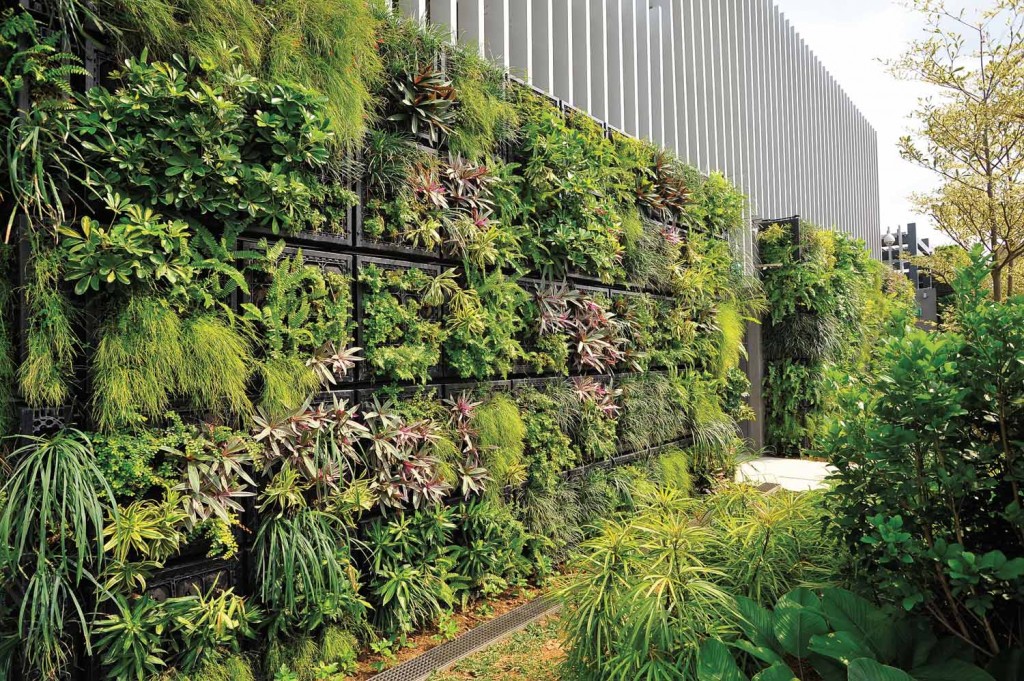An overseas landscaping innovation makes its way stateside.
There’s a long history of Americans adapting French constructions. Our penchant for Gallic food and wines, for example, is renowned. These days, we’re taking a cue from the country’s botanical enterprises. One of the newest fads in landscape design is the living wall, or green wall, an innovation championed and perfected by a Parisian botanist named Patrick Blanc.
What is a living wall? Put simply, it is a wall, either freestanding or part of a building, that is partially or completely covered with vegetation. Blanc pioneered this vertical garden system, no better example of which is the Musée du Quai Branly in Paris, where a 656-foot-by-40-foot wall of green hugs the building’s exterior.
On a smaller scale, the look, which is an outgrowth of commercial installations, is creeping its way into many a backyard stateside. Craig Jenkins-Sutton, owner of landscape company Topiarius (topiarius.com) in Chicago, says the living wall is a design element more and more homeowners are installing not only for the look, but also for the cost-saving benefits.
“They are extremely popular,” Jenkins-Sutton says of the walls. “They also have environmental benefits and offer cost savings on cooling in the summer by creating an insulating barrier.”
How the green wall works: Though the science behind the living wall can be quite technical, a living wall is basically a modular system, whereby trays or cells are attached to rails and contain some type of vegetation. Perennial grasses, succulents, flowers—even herbs and vegetables—have all been done.
“Living walls are becoming more popular because it gives the architect, landscaper, or homeowner the ability to arrange plant material in a graphic design, allowing them to utilize plants they never would have used in the space to accent and add color and design,” says James Rizzo of BrightGreen (brightgreenusa.com), a southeast-Michigan company that specializes in living wall installations.
Maintenance of green walls is an issue, however, and while warm-weather climates are more suitable, they can survive, with care, as annual installations. They should be positioned with access to plenty of sun, and watering is a crucial undertaking. The trays in most living walls are perforated so that when watered from above, the water can easily seep into the soil of each tray. Jenkins-Sutton, however, instructs his clients to install drip irrigation systems for better coverage.
THE GET
Tournesol VGM module


The VGM is a 100-percent recycled plastic planting module, attached to stainless steel rails mounted to a wall or structure. A wide, controllable variety of plants can be used in nearly any condition, and each planting module is available with a four- or eight-inch soil profile. Because restricting cells or baffles don’t limit root growth, plants grow healthier and stronger. Stainless-steel hanging brackets require no screws or fasteners, install easily on planted modules, and allow for removal and maintenance off-site. The rails carry the load of the soil and are easily mounted to either the wall or a framed sub-structure. $125-$150 per square foot. tournesolsiteworks.com.


